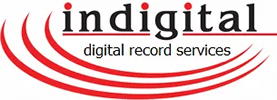When a company decides to transition to a paperless office where most records and transactions are digital rather than hardcopy, some departments are a bigger challenge than others. And one of the toughest places to effect a digital mandate is in HR. Why?
HR (HR) is usually a paper-intensive department, managing many competing agendas and more regulations than most other departments in your company. It may also have an old-school style of worker who has simply relied on paperwork for many years.
But, your HR department can go digital with a little extra planning and effort. What can you do to ensure this? Here are five steps to take now.
1. Assess the Paperwork
Before you can design a good digital file system, you must know what needs storing and how it should be stored. Make a thorough department assessment to determine such things as what documents are maintained in employee files, how long individual documents as well as files must be kept, what the process is for getting signatures and returning paperwork, and how document searches are done.
Involve HR staff in this analysis so you can truly understand their needs in a document storage and retrieval system.
2. Deal With Compliance Early
Compliance is a huge issue for HR departments. These are under rules and regulations from state labor boards, federal agencies, the IRS, occupational oversight agencies, and legal rules. For this reason, compliance must take precedence when planning any digital file storage system. If you show staff that you have already confirmed compliance, they will be more supportive of the new system.
3. Emphasize Consistency
One key to any good document or file storage system is the ease with which staff can access and use what they need. This must also be the case for digital storage. File names, keywords, and storage locations must be consistent if they are to be any use for retrieval.
4. Start a Pilot Program
If your HR staff has done this job for years, they may have a hard time visualizing a paperless process. Help them to see this in action by starting with a pilot project that translates the idea of computer-based records into a reality.
A pilot program involves creating a small and self-contained test run. Look for staff members who have a positive attitude toward the digital record-keeping goal. Then, work with your digital record system provider to create either a testing environment or limited access to a live version so these employees can practice scanning, storing, and access documents. Discuss and evaluate the test run as a group so that everyone sees it in real life.
5. Hire Extra Help
No matter how good your system might be or how complete the buy in is among personnel, one of the biggest obstacles for many HR departments is a lack of time. If your staff is very busy all the time, how will they find the time and attention to devote to digitizing past or current records?
Take this problem seriously by arranging for help with scanning, file naming, or hard copy destruction. Most companies at least need extra help. Interns or temporary employees can digitize the backlog of older records. However, you may need to hire more permanent, part-time help while everyone adjusts to the new system’s needs.
Do you want to start your HR department’s journey toward a paperless future? Begin by making an appointment with the digital imaging experts at Indigital today and taking advantage of our expertise to help your transition run smoothly. We look forward to speaking with you.

